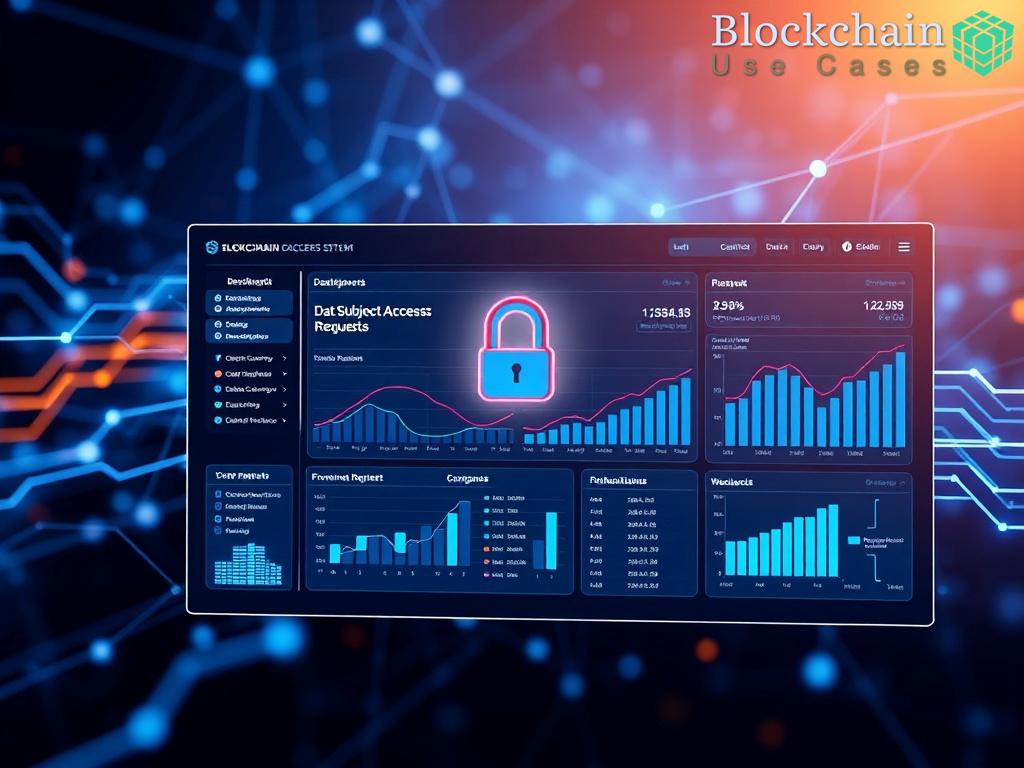Overview of Decentralized CDN Architectures
The evolution of content delivery networks (CDNs) has been significant, especially with the rise of decentralized systems. Traditional CDNs, often reliant on centralized servers, face challenges such as single points of failure, high costs, and limited scalability. In contrast, decentralized architectures leverage a distributed approach, where content is stored and served from multiple locations. This paradigm shift not only enhances security and reliability but also improves performance, making it an attractive option for content providers and users alike.
Decentralized CDNs consist of several integral components that work in harmony to deliver content efficiently and securely. These components include peer-to-peer networks, blockchain technology, and distributed file systems. Their combined functionalities ensure that content is more resilient against outages and attacks, while also facilitating faster delivery speeds. Below is a list that outlines the primary features of decentralized CDN architectures:
- Peer-to-Peer (P2P) Networking: Allows direct sharing of content between users, reducing reliance on centralized nodes.
- Blockchain Integration: Ensures transparency and security in content delivery and access control.
- Distributed Storage Solutions: Utilizes multiple storage locations to enhance data redundancy and availability.
- Dynamic Load Balancing: Automatically adjusts resource allocation based on real-time demand.
- Enhanced Security Protocols: Protects content integrity and user data through encryption and decentralized verification.
When evaluating the effectiveness of decentralized CDNs, it is essential to compare them against traditional models. The table below highlights the critical differences in performance, scalability, and security:
| Aspect | Traditional CDN | Decentralized CDN |
|---|---|---|
| Performance | Limited by centralized servers; potential latency issues. | Faster delivery through multiple nodes and proximity to users. |
| Scalability | Scaling requires additional infrastructure investment. | Easily scalable through additional peers joining the network. |
| Security | Vulnerable to single points of failure and DDoS attacks. | Resilient against attacks due to distributed nature and redundancy. |
Enhancing Security in Decentralized Content Delivery
As the digital landscape evolves, the need for robust security measures in content delivery has never been more critical. Decentralized systems offer a refreshing approach to managing secure CDNs, providing an intricate web of defenses that traditional models often lack. By distributing content across multiple nodes, these systems not only enhance performance but also create formidable barriers against potential threats. This article delves into the mechanisms that make decentralized CDNs a stronghold for secure content delivery.
In a decentralized CDN, security is not just an afterthought; it is ingrained in the architecture itself. The integration of blockchain technology plays a pivotal role in this regard. By ensuring that every transaction or content delivery is recorded in a transparent and tamper-proof manner, blockchain enhances trust among users. Each node in the network can verify content authenticity, significantly reducing the risk of data manipulation. Furthermore, decentralized verification processes ensure that user data remains protected, as sensitive information is not stored in a single location.
The strength of decentralized CDNs lies in their ability to withstand attacks that typically cripple centralized systems. For example, DDoS attacks often target vulnerable points in the network, but in a decentralized setup, the load is spread across numerous nodes. This distribution not only mitigates the impact of such attacks but also ensures continuous availability of content. Additionally, the redundancy built into these systems means that even if several nodes go offline, the overall network remains functional, thereby safeguarding content delivery.
To further bolster security, decentralized CDNs employ advanced threat detection algorithms that monitor network traffic for unusual patterns. These algorithms, powered by machine learning, can identify potential breaches in real time, allowing for swift action to be taken. Moreover, by utilizing a network of peers, decentralized systems can share threat intelligence, enhancing their collective ability to respond to emerging threats. This proactive stance not only secures content but also instills confidence among users who rely on these networks for their digital needs.
Performance Metrics for Decentralized CDNs
In the rapidly evolving landscape of digital content delivery, the performance of decentralized CDNs stands as a crucial determinant of their viability and effectiveness. As organizations recognize the limitations of traditional CDNs, they are increasingly turning to decentralized systems, which promise not only enhanced security but also superior performance metrics. This shift raises important questions: How do decentralized CDNs measure up in terms of speed, reliability, and overall efficiency? Understanding these performance metrics is essential for content providers aiming to optimize their delivery strategies.
Speed and Latency Optimization
Performance in decentralized CDNs is primarily characterized by their ability to deliver content rapidly and with minimal latency. Unlike traditional CDNs, where data often has to traverse long distances to reach end users, decentralized systems leverage a network of distributed nodes located closer to the user. This proximity drastically reduces latency, resulting in faster load times. Moreover, the dynamic nature of peer-to-peer networking allows for content to be served from the most efficient node, ensuring that users experience seamless streaming and downloads. Real-time data routing and caching techniques further enhance this speed, making decentralized CDNs an attractive choice for high-demand content delivery.
Reliability and Redundancy Features
Reliability is another cornerstone of performance metrics in decentralized CDNs. The architecture’s inherent redundancy means that content is replicated across multiple nodes, which significantly decreases the chances of downtime. In the event of a node failure, the system can automatically redirect requests to alternative nodes without disrupting service. This resilience is particularly critical during peak usage times or in the face of cyber threats. The table below illustrates the comparative reliability of decentralized versus traditional CDNs, highlighting the benefits of redundancy:
| Aspect | Traditional CDN | Decentralized CDN |
|---|---|---|
| Node Failure Impact | High; single point of failure | Low; multiple alternatives available |
| Content Redundancy | Limited; dependent on central storage | Extensive; distributed across numerous nodes |
| Downtime Risk | Higher; maintenance and updates can disrupt | Lower; self-healing capabilities |
Scalability and Flexibility in Performance
The scalability of decentralized CDNs is a game-changer in performance management. As demand fluctuates, these systems can easily incorporate new nodes without the need for substantial infrastructure investment. This flexibility enables content providers to scale operations up or down efficiently, ensuring that they can meet varying audience needs without compromising performance. Furthermore, decentralized architectures adjust dynamically to real-time traffic patterns, optimizing resource allocation and enhancing overall user experience. This adaptability is crucial in today’s fast-paced digital environment, where content consumption is continually evolving.
Challenges and Solutions in Decentralized Content Distribution
The transition to decentralized content delivery networks (CDNs) presents a myriad of challenges that stakeholders must address to fully harness the potential of this innovative architecture. While the benefits of decentralization—such as enhanced security, improved scalability, and increased resilience—are compelling, they are accompanied by unique obstacles that can impede effective implementation and operation. By understanding these challenges and developing targeted solutions, organizations can successfully navigate the complexities of decentralized content distribution.
One of the most significant challenges facing decentralized CDNs is the technical complexity inherent in their architecture. The reliance on peer-to-peer networks and distributed storage systems requires sophisticated algorithms to manage content delivery efficiently. Without these algorithms, content retrieval may suffer from latency issues, affecting user experience. To address this, organizations are increasingly investing in advanced routing protocols and caching strategies that optimize data flow between nodes. These innovations not only enhance the speed of content delivery but also ensure that users remain engaged with minimal disruptions.
Another critical challenge is ensuring user trust within decentralized systems. With the absence of a central authority, users may be hesitant to engage with these networks, raising concerns over data integrity and content authenticity. To counteract these apprehensions, the integration of blockchain technology is proving to be a game-changer. By leveraging blockchain’s immutable ledger capabilities, decentralized CDNs can provide verifiable proof of content ownership and distribution. This transparency fosters trust among users, empowering them to participate actively in the network while feeling secure about their data. Furthermore, implementing robust encryption protocols enhances the security of user data, mitigating the risks associated with unauthorized access.
Moreover, continuous education and outreach initiatives aimed at informing users about the benefits and security measures of decentralized CDNs are essential. By actively engaging users and addressing their concerns, organizations can cultivate a more trusting environment that encourages widespread adoption of decentralized content distribution.
Future Trends in Decentralized CDN Technologies
The landscape of content delivery networks is on the brink of a transformation, driven by the continuous innovations in decentralized technologies. As the digital ecosystem expands, the demand for secure, efficient, and responsive content delivery is escalating. Decentralized CDNs stand poised to address these demands, shaping the future of how digital content is shared and consumed. This article explores the emerging trends that are set to redefine decentralized CDNs, highlighting how they will enhance user experience, security, and operational efficiency.
Artificial Intelligence (AI) is increasingly becoming integral to the operational frameworks of decentralized CDNs. By harnessing AI algorithms, these networks can optimize content distribution based on user behavior and preferences. The implementation of machine learning techniques allows for predictive analytics that can anticipate user demands, thus streamlining content delivery processes. Moreover, AI can enhance the security framework by identifying potential threats and anomalies in real-time, thereby fortifying the integrity of content shared across the network.
Another pivotal trend is the integration of edge computing within decentralized CDN architectures. By processing data closer to the end-user, edge computing reduces latency and improves the overall responsiveness of content delivery. This trend is particularly beneficial for applications requiring real-time data, such as live streaming and gaming. As more nodes are established at the edge, the network’s capacity to handle surges in traffic will increase, making decentralized systems a more robust alternative to traditional CDNs.
- Blockchain Innovations: Advanced blockchain solutions will facilitate smarter contracts and improved content ownership verification.
- Improved Interoperability: Enhanced compatibility between different decentralized platforms will foster seamless content sharing.
- Decentralized Identity Management: The emergence of user-centric identity solutions will empower users to control their data and access rights.
- Sustainability Initiatives: Efforts to minimize the carbon footprint of CDNs through energy-efficient nodes and renewable resources.
- Community-Driven Governance: Increased emphasis on decentralized governance models will ensure user participation in network maintenance and decision-making.
As these trends unfold, they will not only enhance the capabilities of decentralized CDNs but also reshape the paradigm of content delivery. The future promises a more interconnected, secure, and user-focused landscape, where content delivery is optimized for efficiency and sustainability.





